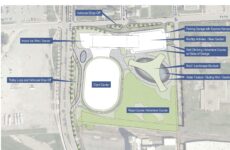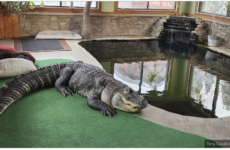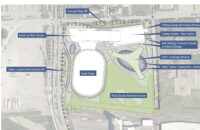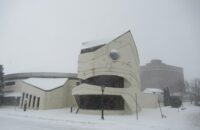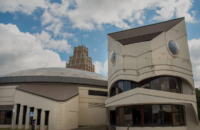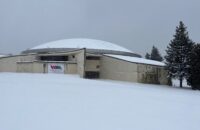Please click the link below to subscribe to a FREE PDF version of each print edition of the Niagara Reporter
http://eepurl.com/dnsYM9

By: Staff Reporter
For Schools Located in a Geographic Area Designated as a Red or Orange Zone
There is no longer a requirement for schools located in red or orange zones to close to in- person instruction. Schools in these zones may remain open for in-person instruction, subject to strict adherence to this guidance and any directives issued by DOH.
Schools in red and orange zones must complete an attestation on the school survey, in addition to required dashboard reporting, that the school is complying with the testing requirements below.
Schools in an Orange Zone
For schools located in a geographic area designated as an Orange Zone, a total of 20% of in- person students, faculty and staff must be tested for COVID-19 over the one month period following the zone designation. The numbers tested should be proportionately spread across the month with 10% the maximum/minimum to be tested biweekly.
Schools in a Red Zone
For schools located in a geographic area designated as a Red Zone, a total of 30% of in person students, faculty and staff must be tested for COVID-19 over the one month period following the zone designation. The numbers tested should be proportionately spread across the month with 15% the maximum/minimum to be tested biweekly.
Schools in either an Orange or Red Zone
If the random sampling generates 9 or more positive cases in any school, or if for a sample size of more than 300 weekly tests, achieves a positivity rate of 2% or higher (6 cases or more depending on sample size) in New York City, or 3% (9 or more cases depending on sample size) outside of New York City, of one such discrete sample, then the school will be required to close.
In addition, all schools in orange or red zones are required to continue to adhere to all existing State-issued requirements, including completion of the daily school survey. Schools must also:
-Ensure face coverings are worn by students, faculty, and staff, in accordance with Department of Health’s (DOH) Interim Guidance for In-Person Instruction at Pre-K to Grade 12 Schools, particularly since orange and red zones reflect higher rates of COVID-19 community infection, or any local department of health order regarding the use of face coverings in this setting.
-Face coverings provide protection to the wearers and individuals around wearers by placing an effective barrier over the nose and mouth that prevents spread of COVID-19 through respiratory droplets. The use of face coverings is particularly important when social distancing of at least six feet is unable to be maintained as close contact remains the main method of transmission, according to the Centers for Disease Control and Prevention (CDC).
-The school should ensure that it provides the opportunity to be tested on school grounds, or otherwise support testing and/or accept test results from healthcare providers.
-If the school does not hold a testing event or provide on grounds testing, test results provided to the school must be received within 7 days from the date of specimen collection and specimen collection must be after the date that geographic area in which the school is located was designated an orange or red zone.
-If at any point the geographic area in which the school is located is designated as a yellow zone, the yellow zone biweekly testing requirement of 20% of the in- person population (i.e., students, faculty and staff) applies immediately, and such school shall only be required to test 20% beginning that week, in accordance with DOH’s Interim Guidance on Mandatory COVID-19 Testing in Public and Non-Public Schools Located in Areas Designated as “Yellow Zones” Under the New York State Cluster Action Initiative.
Students who are participating in hybrid learning or in all-virtual learning, and who are attending an OCFS-licensed/registered or enrolled legally exempt group child program located within a school during school hours, are subject to the testing requirements and must be included in the school’s random testing protocols. Additionally, the testing requirement applies to Pre-K classes that are taking place on a school site.
Members of the school community who test positive for COVID-19 must isolate, according to established DOH guidance. Further, schools must notify health authorities immediately upon being informed of any positive test results by an individual within school facilities or on school grounds, including students, faculty, and staff, pursuant to DOH guidance. Partnerships between schools and local health departments are critical to effective implementation of COVID-19 protocols in this educational setting. Specifically, schools must support all contact tracing efforts from health authorities and such tracing must be promptly performed to ensure that contacts to newly identified positive individuals are quarantined, according to established DOH guidance.
Testing Options
To ensure that students, faculty and staff have been tested for COVID-19, schools have the following options:
-Schools can accept written test results from healthcare providers;
-Schools can have students, faculty, and/or staff go to a test site run by New York State to have specimens collected for testing;
-Schools can establish partnerships with other entities who are authorized to perform testing to have their students, faculty, and staff tested;
-Schools that currently have a limited service laboratory (LSL) registration can add COVID-19 antigen testing to their existing LSL registration, request to receive rapid tests from the state and perform testing on their students, faculty, and staff; or
-Schools can become approved to perform testing by obtaining an LSL registration and once approval is granted, request to receive rapid tests from the state and perform testing on their students, faculty, and staff. For schools that do not have an LSL, Local Health Departments (LHDs) are required to allow schools to operate under their LSL for the purposes of conducting weekly testing. If the LHD does not have an operational LSL or is unable to support the school in conducting testing, the LHD must work with the school to identify community partners with an LSL. See Guidance.
-Schools can utilize pooled testing. However, pooled testing must be conducted by a laboratory that is approved to conduct diagnostic pooled testing so that individuals receive their test results and they can be reported to the state.
New York State is providing schools through local health departments with rapid test kits upon request. Schools must provide trained personnel, with necessary laboratory permits, to conduct the tests.


